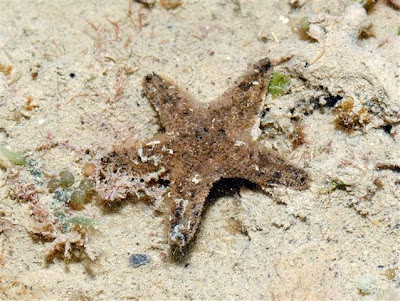I'm back from the long hiatus posting the trips from October to December 2013! In fact, I have more backlogs from earlier this year. Shall endeavor to finish all of them before the end of the year. :)
During early October, I was out with Hui Fang and her daughter, Ying Xuan to share with them the beauty of our marine intertidal habitat on a mainland shore.
Here's the ever adorable Ying Xuan and we are off looking out for our favourite animal- the sea stars! Yes, we do name the starfish as sea stars are they are not fishes and the mummy and daugthers were quick to catch this more-accurate naming.
Here are some of the animals that we have spotted during the trip and this is a Haddon's carpet anemones (Stichodactyla haddoni) beside the Fan shell clam (Family Pinnidae) that is sticking out from the ground. You can actually see the shell is encrusted with even more marine life such as ascidians and barnacles!
What a wonderful surprise to spot the horseshoe crab!
And it is not just one but two of these Coastal horsehoe crabs (Tachypleus gigas)! However, they are not true crabs as they are more closely related to spiders than crabs. For first timers spotting these animals, just note that they don't use their tail to sting people. And we do not want to dangle them by their tail as they will be helpless if the tail is broken.
Furthermore, the horseshoe crabs provide a substance used to test the presence of bacteria and Singapore scientists made breakthroughs in cloning this substance
This Gong-gong snail (Strombus turturella) is not an unfamiliar animal as they are sometimes eaten as seafood at restaurants. Although the underside of the shell is mostly white, the upperside when covered with silt can be very well camouflaged with the substrate.
The Calf moon snail (Natica vitellus) used to be uncommon but we have been starting to see them in various locations recently.
This distorted golf-ball looking creature is actually the Ball sea cucumber (Phyllophorus sp.). Don't you think they are aptly named?
This banded anemone is known as the Tiger anemone. Dr Daphne calls it the Strawberry anemone because of the red pimples. They tend to be found on soft silty and seagrass habitats.
There is a stretch of rocky shore which is home to many marine life if you take effort to gently flip the underside to take a look at what is beneath.
One of the most common marine critter that you can spot would be the cowrie! These pretty snails keep their shells "well-polished" as their mantle cover and protect the shells.
All too soon, as the sun sets and approaches the horizons, more echinoderms start to appear!
One of which would be the brittle stars with long and "hairy" arms.
And after much searching, we finally saw a sea star! :)
This cookie looking sea star is well named as the Biscuit sea star (Goniodiscaster scaber). We were thankful and glad to see a live sea star first hand!
And that's not all, we also managed to find a Crown sea star (Asterina coronata) which sometimes is called as the Rock star as they are mainly found near, on or underneath rocks.
It's been great sharing the beauty of Changi shore with friends and hope that this would be a new beginning to Hui Fang and Ying Xuan to appreciate nature at our own backyard!




















No comments:
Post a Comment